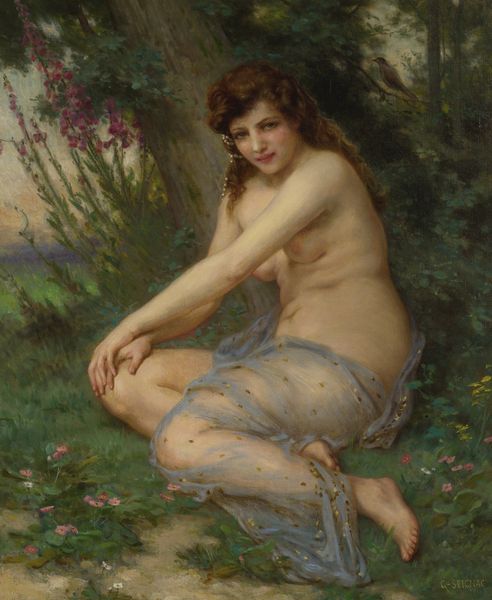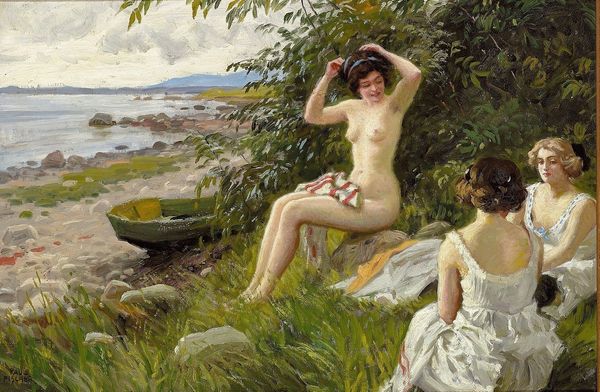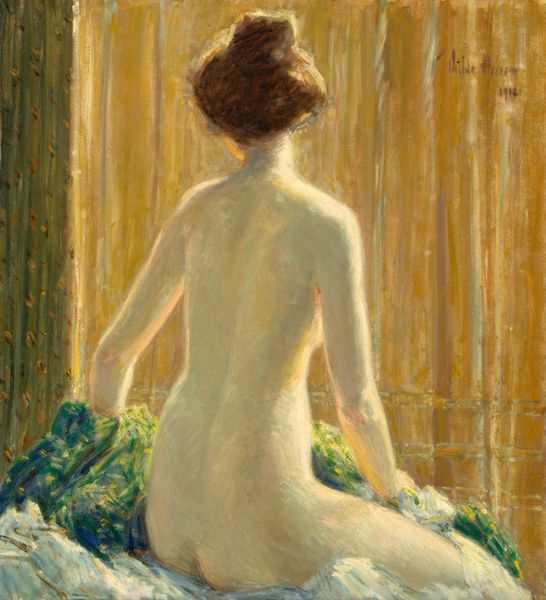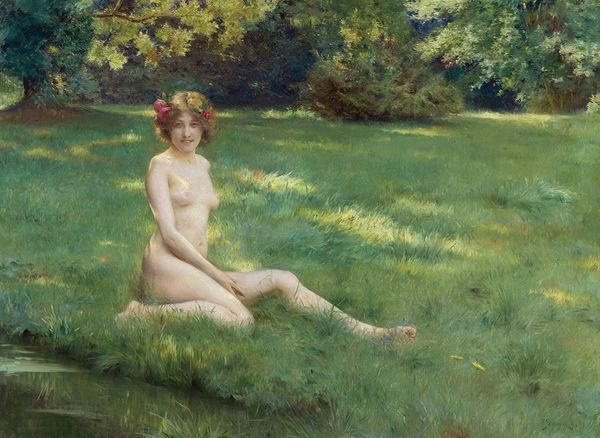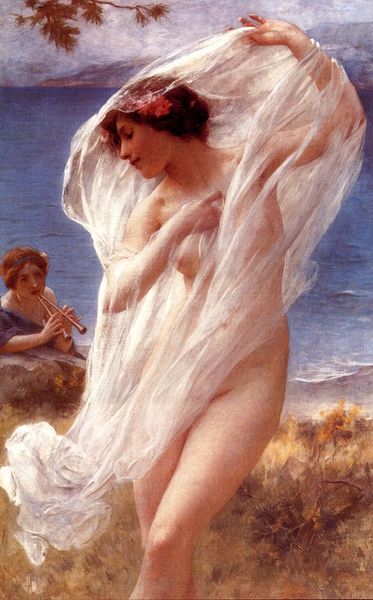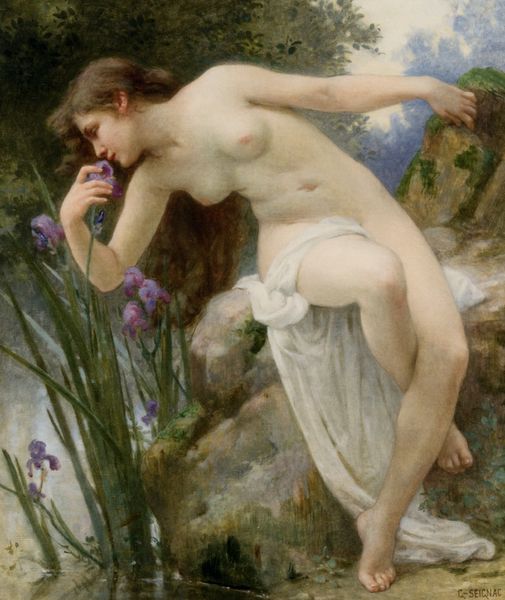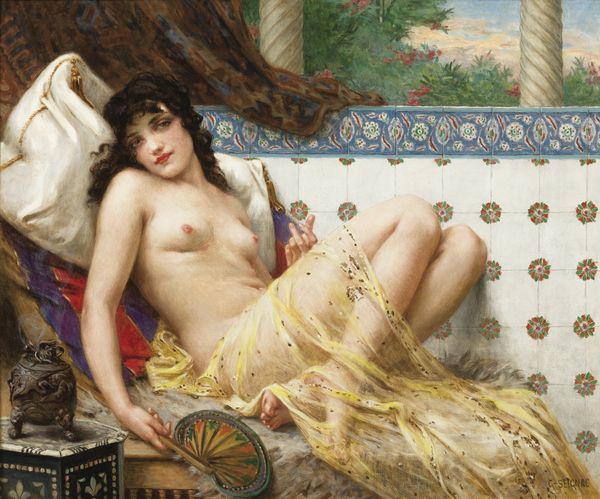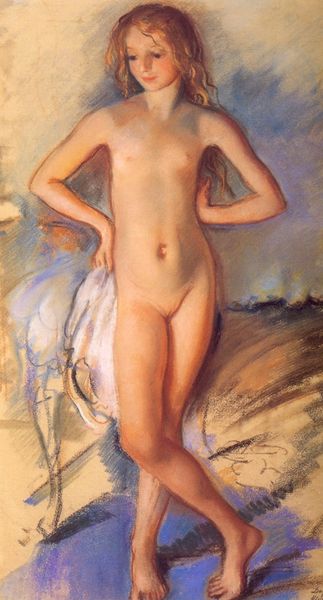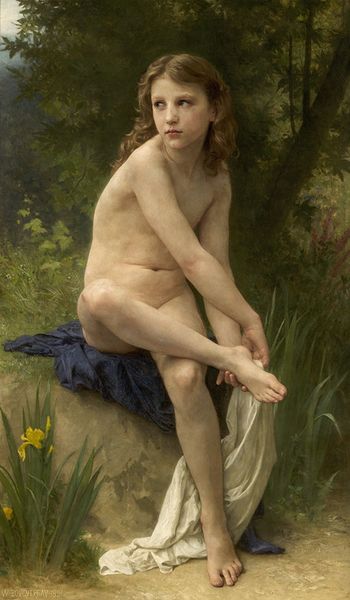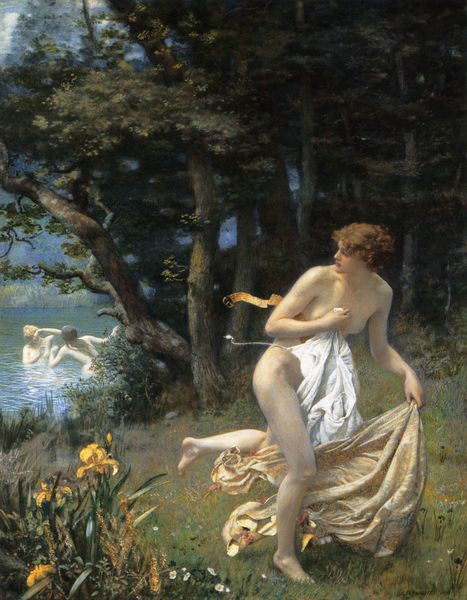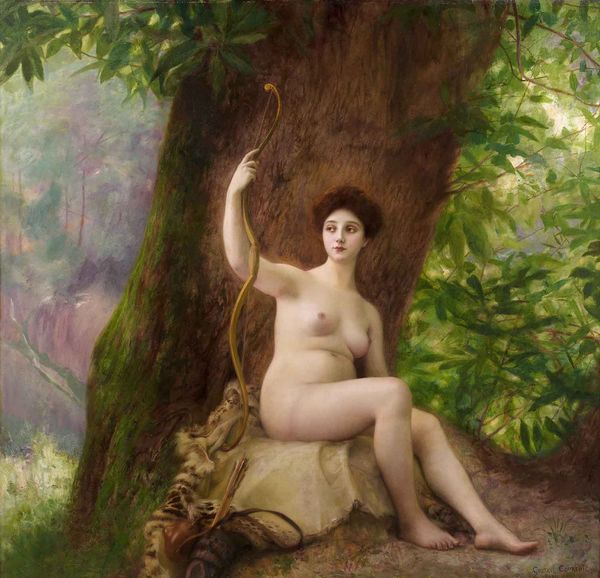
painting, oil-paint
#
portrait
#
painting
#
oil-paint
#
landscape
#
figuration
#
oil painting
#
romanticism
#
genre-painting
#
nude
#
erotic-art
#
realism
Copyright: Public domain
Editor: Here we have what is referred to as “Nu Sur La Plage” by Guillaume Seignac, and it looks like it's done in oil paints. There's something quite striking about the woman's gaze – she looks right out at the viewer. What social context do you think might have been informing this choice in painting a nude woman? Curator: Well, looking at the composition and the woman's direct gaze, one immediately considers the evolution of the nude in art history, and what that means in relationship to viewership and power. In academic painting, these subjects, although seemingly innocent, were loaded with social meaning. Considering this painting's creation in a society deeply governed by the male gaze, how might the presentation of the female form be seen as upholding certain social norms and desires? Editor: So it's less about pure artistic expression and more about fulfilling existing societal expectations and power structures? Curator: Exactly. It's interesting to consider which institutions at the time had an affect on an artist like Seignac. What kinds of patronage supported this kind of painting? And to what end? While aesthetically pleasing, the image also functions within a specific social and political framework of its time, and these factors affected not only the themes they chose but how these paintings are perceived, interpreted and consumed. Editor: It does give a whole new perspective to it. So we’re not just appreciating beauty, but also unpacking the societal messages it subtly conveys. Curator: Precisely! And that awareness can deepen our understanding and appreciation. Editor: I will look at works like this with new eyes now. Thank you!
Comments
No comments
Be the first to comment and join the conversation on the ultimate creative platform.
